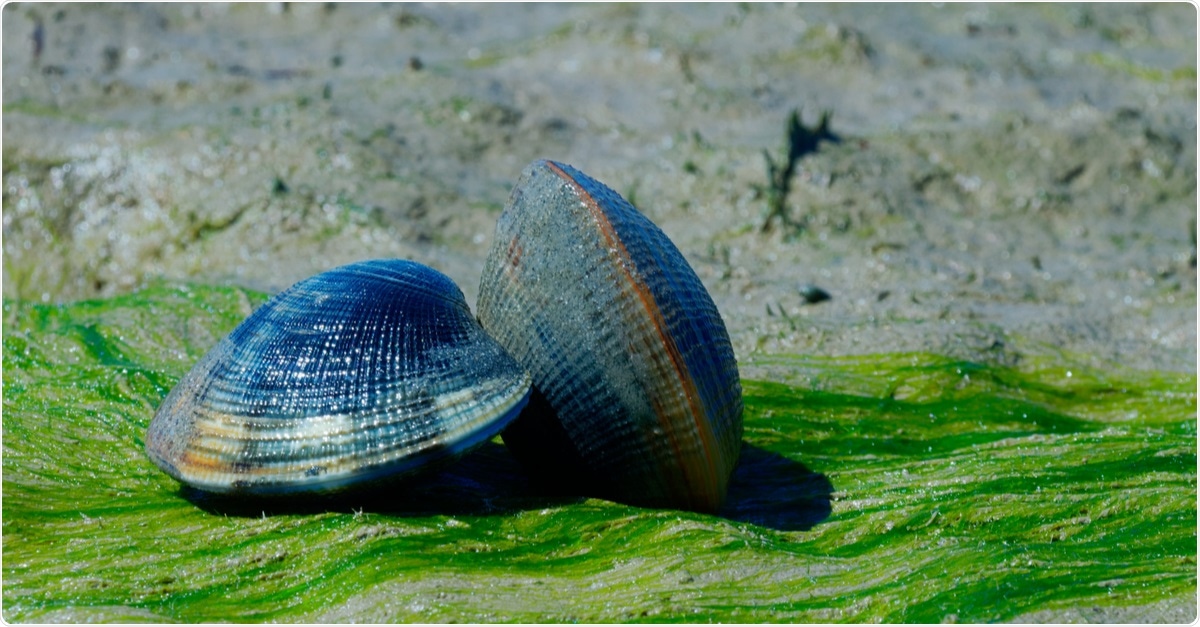A research team has reviewed the existing literature on compounds derived from molluscs used for treating respiratory diseases. This may provide clues for developing new drugs along with incorporating traditional medicines.
Respiratory diseases such as asthma and chronic obstructive pulmonary disease (COPD) are among the leading causes of death and disability worldwide. The respiratory system, which allows the exchange of oxygen and carbon dioxide, also allows the respiratory organs to come in contact with airborne particles and infectious organisms. The current COVID-19 pandemic caused by the severe acute respiratory syndrome coronavirus 2 (SARS-CoV-2) and previous coronavirus epidemics caused by the MERS virus and SARS-CoV are other examples of severe respiratory diseases.
Respiratory diseases can be chronic, when caused by lifestyle or genetic factors, or acute, when caused by infectious organisms or trauma. Whatever the cause, these diseases evoke a strong immune response, which generally leads to inflammation. Drugs such as antibiotics, vaccines, and non-steroidal anti-inflammatory drugs are some common methods used to treat these diseases. However, they can have undesired side effects and may lead long-term to drug resistance.
Because of this, there have been great efforts to develop safer drugs from natural compounds. One such species is Mollusca, comprising ecologically diverse animals like snails and squids with or without shells. They are soft-bodies and generally lack adaptive immune systems, which means they have antigen-specific cell-mediated protection methods. Many efforts have led to the isolation of primary and secondary metabolites with antimicrobial, anti-inflammatory, and immunogenic properties.
Growing evidence suggests compounds found in molluscs can be used to treat respiratory diseases. In a recent paper, researchers from Southern Cross University in Australia reviewed published studies on the use of molluscs to treat respiratory diseases to help identify relevant future research efforts. The authors screened more than 900 articles and included 97 biomedical review articles, 22 traditional medicine studies, and relevant patents.
Traditional respiratory medicines using molluscs
Ancient Greeks used boiled octopus flesh to help relieve nasal congestion as far back as 800 BC. In Traditional Chinese Medicine (TCM), 61 mollusc-derived medicines are used to treat respiratory diseases. Traditional medicines have long been used to treat respiratory diseases such as tuberculosis, pneumonia, asthma, and bronchitis in South America, India, and Europe.
![Molluscan body parts used to derive extracts/compounds in (A) Traditional Chinese Medicines (n = 61 marine remedies; [104] Table S2), (B) other traditional medicines (n = 39 remedies; Table S1) (C) in vitro, in vivo and clinical biomedical studies (n = 97 articles; Tables 5–8 and Table S3; not including studies using Hc as a model antigen Table S4). NA: not available, AM: adductor muscle, HBG: hypobranchial gland, DG: digestive gland, SG: salivary gland; shell includes cuttlebone; whole includes those listed as “whole animal” or “body and shell” Molluscan body parts used to derive extracts/compounds in (A) Traditional Chinese Medicines (n = 61 marine remedies; [104] Table S2), (B) other traditional medicines (n = 39 remedies; Table S1) (C) in vitro, in vivo and clinical biomedical studies (n = 97 articles; Tables 5–8 and Table S3; not including studies using Hc as a model antigen Table S4). NA: not available, AM: adductor muscle, HBG: hypobranchial gland, DG: digestive gland, SG: salivary gland; shell includes cuttlebone; whole includes those listed as “whole animal” or “body and shell”](https://www.news-medical.net/image.axd?picture=2020%2F11%2FCapture_454545645567767.jpg)
The shell is the most commonly used part used in traditional medicines, followed by the flesh. Shells are powdered or burnt and prepared into paste, pills, and solutions. The flesh is cooked and eaten or applied externally. There are at least 100 traditional medicines using more than 300 species of Mollusca.
Mollusc extracts and compounds for respiratory diseases
Studies have also investigated the bioactivity of mollusc compounds for respiratory diseases. In vivo studies generally used mouse models of respiratory diseases. The authors also identified 11 human clinical trials using purified mollusc compounds for respiratory diseases.
Antimicrobial activity has been observed against Pseudomonas aeruginosa, which causes chronic bacterial infections like COPD, using mollusc extracts like tyriverdin, polyketides, and polypeptides. Extracts from cephalopods has been seen to be effective against pneumonia. Molluscs are also good sources of zinc. Zinc has been shown to prevent virus replication in flu and COVID-19.
Mollusc extracts also show anti-inflammatory activity. For example, an extract of the New Zealand green-lipped mussel is known to inhibit pathways for the production of eicosanoids. Hypobranchial gland extract and 6-bromoisatin from D. orbita has shown in vitro inhibition of pro-inflammatory mediators. Several compounds and extracts have also shown anticancer activity. Kahalalide F, dolastatin-10, and related analogues are now into Phase I and Phase II clinical trials for respiratory cancers.
Molluscan hemocyanins have a strong immunogenic response. They generate high antibody levels and T cells, and are regularly used as vaccine adjuvants, as they are generally considered safer than synthetic adjuvants. Keyhole limpet hemocyanin from the gastropod Megathura crenullata is used extensively as a vaccine adjuvant and is commercially available.
Recommendations from the review
Although natural products can provide a large library of potential compounds for combatting respiratory diseases, the economical feasibility of extracting compounds in an ecologically viable manner is a critical question. Using traditional knowledge for use commercially has legal challenges, as many countries have laws protecting such knowledge.
The authors write that based on their review, they find there is a scarcity in research on mollusc bioactive compounds, given the large number of species in this phylum and their uses in traditional medicine. Studies using compounds isolated from mollusc glands, reproductive organs, and microbial symbionts could be worth pursuing. Mollusc compounds could also be useful in treating biofilm-associated respiratory diseases and could improve the efficacy of antibiotics. Thus, there is a greater need for research in this area, including considering sustainable supply and giving due credit to traditional knowledge.
